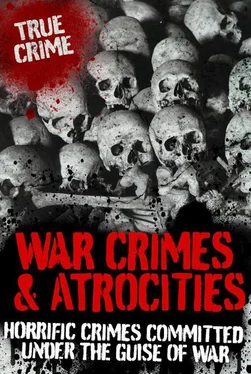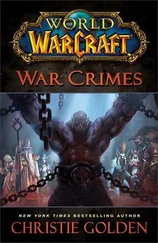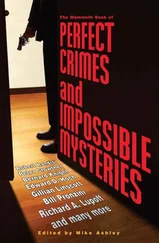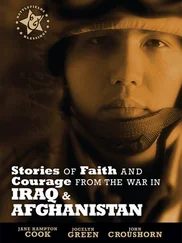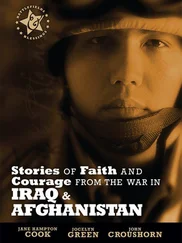The Japanese were furious at having been forced to retreat by the Australians, and any prisoners of war taken by the Japanese were not allowed to survive. Already short of supplies, they were not prepared to give their precious rations to the prisoners, but what was even more horrifying was the evidence that the Japanese actually ate their victims even though they had not exhausted their own food supplies. When the Australians pursued the Japanese, they found that they had left gruesome evidence behind them. Many of the Australian soldiers were found with the meat stripped off their legs and half-cooked human meat in the Japanese pots. Next to these dead soldiers were supplies of rice and tins of food that hadn’t been touched.
Two Japanese officers, Major Sueo Matoba and General Yoshio Tachibana, were both tried and executed for war crimes, including cannibalism, that took place in September 1944. They were accused of eating American flesh washed down with sake in a feast that was laid on for officers on the island of Chichi Jima.
1937–38

The Rape of Nanking, also known as the Nanking Massacre, is one of the most well-known of the war crimes committed by the Japanese army. In December 1937, the Japanese Imperial Army marched into Nanking, China’s capital city, and committed numerous atrocities, including rape, looting, arson and the mass execution of prisoners of war and civilians alike.
The six weeks of atrocities were preceeded by a tough battle at Shanghai against the Chinese in the summer of 1937. The Japanese had expected to defeat the Chinese easily, but when the fighting continued into late autumn the infuriated troops were ready to take their revenge. When they eventually defeated the Chinese in November, 50,000 Japanese troops stormed the capital city with instructions to ‘kill all captives’.
Their first job was to eliminate all Chinese prisoners of war, which started as soon as they were transported by truck to remote areas outside of Nanking. The young Japanese soldiers, who were goaded on by their superiors, were encouraged to inflict as much pain as possible on their captives. Filmed footage that was taken at the massacre, shows Japanese soldiers using the prisoners for bayonet practise and shows prisoners being decapitated and their heads being held up as souvenirs. Other victims were drenched in petrol and burnt alive, while some were simply shot.
After the Japanese soldiers had taken their revenge on the prisoners of war, they turned their attention to the women of Nanking. Regardless of age, old women and young girls were dragged off and sexually abused. It is estimated that as many as 80,000 women were gang-raped by the Japanese and then either shot or stabbed to death so that they could not bear witness to the inhumane cruelty. Even pregnant women were not spared, with many having their bellies ripped open and the foetuses torn out of their bodies.
Many Chinese men were forced to rape their own daughters, while sons were forced to rape their mothers, brothers and sisters, as the rest of the family were made to watch. Shops were looted, shopkeepers were killed and the buildings were set on fire with people locked inside. It appeared that the Japanese soldiers took great pleasure in watching the suffering of their victims.
The untold carnage took place over a period of six weeks. Corpses littered the streets and Nanking was described as literally ‘running with blood’. Those who were not killed on the spot were taken outside the village and relatives were forced to bury each other alive. Following this period of heinous bloodshed, things quietened down and the Japanese settled in for occupation. To try and pacify the remaining horror-struck inhabitants of Nanking, the army supplied them with highly addictive narcotics, which included opium and heroin, regardless of age. It is estimated that as many as 50,000 people became addicted to these drugs. Young Chinese women were forced to become sex slaves, being used entirely for the pleasure of the Japanese soldiers.
Even the hospital was not safe from the Japanese, and it became the site of some of the worst atrocities. Bandages were torn from the bodies of the wounded, plaster casts were smashed to pieces and nurses were repeatedly raped. The unabated violence continued from mid-December 1937 to February 1938 until as much as two-thirds of the city were destroyed.
HELP COMES TO NANKING
As the stories leaked out of China, the world looked on in horror, finding the stories that had been smuggled out of Nanking just too incredible to believe. However, back in Nanking not everything was hopeless and samaritans turned up in the form of 20 US and Europeans civilians who had survived the massacre. They consisted of missionaries, doctors and businessmen who took it on their own heads to form an International Safety Zone within the capital. Bravely displaying Red Cross flags, they declared a 4 sq km (2.5 sq mile) area in the middle of the city as off limits to any members of the Japanese army. On many occasions they risked their own lives to try and rescue Chinese men, women and children from ultimate death or abuse. They worked day and night to the point of exhaustion to give aid to the persecuted Chinese civilians and became the unsung heroes of Nanking. Around 300,000 Chinese took refuge in their safety zone, and those who did not make it into the safe area were ultimately killed.
The Japanese eventually evacuated China when the USA dropped the atomatic bombs on Hiroshima and Nagasaki, but Nanking bore the scars for a long time. Not only was the city in ruins, but bodies were still floating in the river a year after the atrocities had ended, leaving a nauseating stench for miles around.
The samaritans described Nanking as ‘hell on earth’ and one claimed, ‘I did not imagine that such cruel people existed in the modern world’. The official estimate of the death toll is 300,000, and this is engraved on the stone wall at the entrance of the Memorial Hall in Nanking.
In Japan, the severity of the massacre remains widely divided and, while most do not deny that the massacre took place, some government officials have stated that they feel the extent of the crimes has been grossly exaggerated, claiming it is purely Chinese propaganda. This is despite the fact that there is both photographic and independent eyewitness evidence.
On 15 August, 1995, which was the 50th anniversary of the massacre, the Japanese prime minister, Tomiichi Murayama gave the first formal apology for the actions of the Japanese army during the war. Chinese people are now beginning to accept the formal apologies, and the majority feel it is a step in the right direction.
CRIMINAL TRIALS
Many years after the Nanking massacre, criminal trials were held at the Tokyo Trials and lasted from May 1946 until November 1948. The prosecuting team consisted of judges from 11 different countries, in-
cluding China and the USA. A total of 28 men were charged with mass murder, pillage, torture and other atrocities, and of these 25 were found guilty, two died during the trial and one had a nervous breakdown. Seven of the accused were hanged, and the remainder received life sentences, although none served longer than eight years.
1945

Since the Japanese attack on Pearl Harbor in 1941, the USA and Japan had been at war. The Japanese were warned of the consequences of continued resistance in July by the terms of the Potsdam Declaration, which had been signed by the US president, Harry S. Truman and the UK prime minister, Clement Attlee, in agreement with the president of the National Government of China, Chiang Kai-shek. However, when Japan rejected the Declaration, Attlee authorized the use of two atomic bombs. The dropping of these two bombs on the cities of Hiroshima and Nagasaki bought the long World War II to an abrupt end, but the bombings caused untold suffering.
Читать дальше
